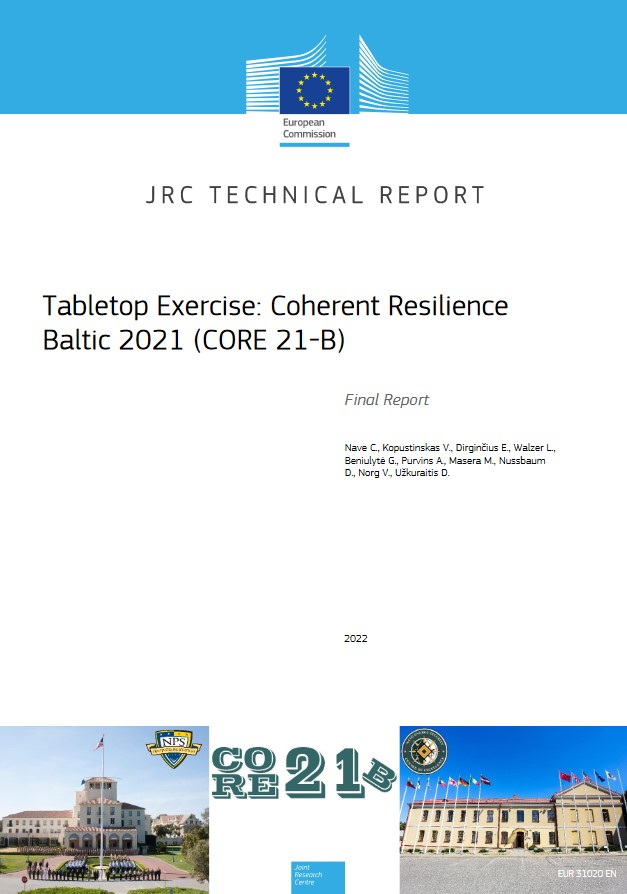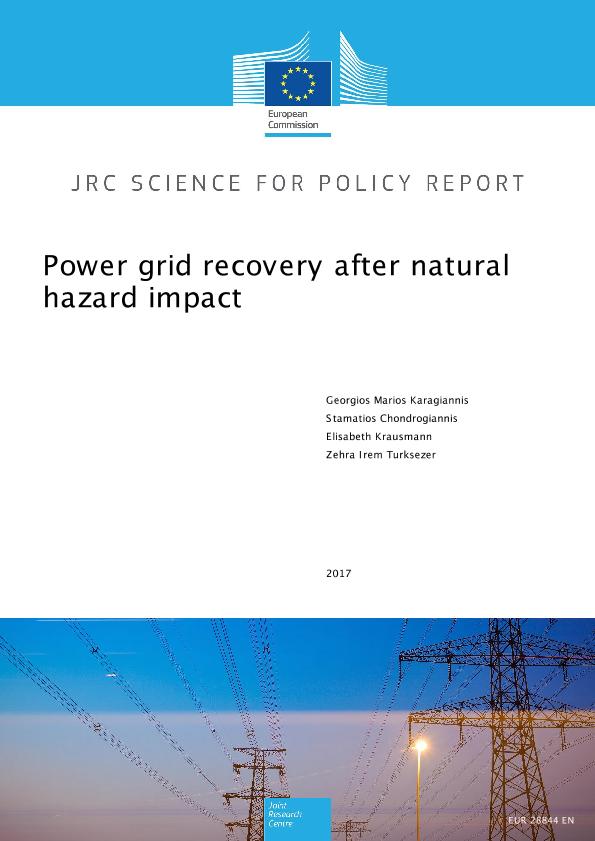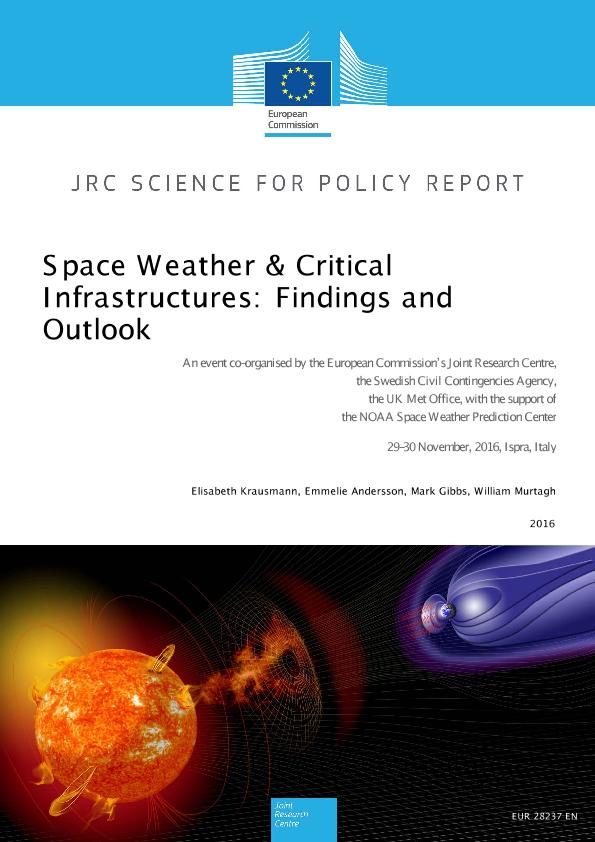Background and context
The quality of life of EU citizens and their security, as well as the correct and efficient functioning of the internal market, depend on the provision of essential services through different critical infrastructures in a wide range of sectors, including the energy one.
It is therefore imperative that critical energy infrastructures are adequately protected against a wide spectrum of threats, both natural and man-made, unintentional and with malicious intent.
Where this fails and disruptions nevertheless follow, critical energy infrastructures must be resilient, i.e. able to recover quickly within an acceptable amount of time.
Our role
In support of EU efforts to protect critical infrastructures, we develop methods and tools for international energy security exercises, and we assess the power system resilience and recovery performances after adverse events (such as cyber attacks, extreme weather etc).
Main publications

2021 - Tabletop exercise: Coherent Resilience 2021 Baltic (CORE21-B)
Coherent Resilience 2021 – Baltic (CORE 21-B) was a Tabletop Exercise (TTX) on the Baltic States and hybrid threats to the regional electric grid with a focus on critical energy infrastructure protection. The TTX took place 20-24 September 2021 in Vilnius, Lithuania. The aim of the exercise was to support the national authorities and electricity system operators of the Baltic States in ensuring supply of electricity to civilian and military consumers and mitigating the possible disruption in the light of hybrid threats over the Baltic region due to vulnerabilities caused by close proximity of unsafe Belarusian NPP and the process of synchronization of the Baltic States power grid with the Continental Europe grid. CORE 21-B was a five-day regional, multilateral, interagency, and public-private sector event that was executed with an academic seminar, a three-day TTX, and a distinguished visitors’ day that included after-action briefings. This report focuses largely on syndicate responses to the exercise scenario vignettes and injects to include capturing key takeaways and recommendations. The event brought together over 100 participants from 12 NATO and European Union countries or partner nations, who came from 35 different organizations representing electricity supply and energy security stakeholders.

2017 - Power Grid Recovery after Natural Hazard Impact
Natural hazards can affect the electricity supply and result in power outages which can trigger accidents, bring economic activity to a halt and hinder emergency response until electricity supply is restored to critical services. This study analyzes the impact of earthquakes, space weather and floods on the power grid recovery time. For this purpose, forensic analysis of the performance of the power grid during 16 earthquakes, 15 space weather events and 20 floods was carried out.
The study concluded that different natural hazards affect the power grid in different ways. Earthquakes cause inertial damage to heavy equipment and brittle items, and ground failure and soil liquefaction can be devastating to electric infrastructure assets. Recovery time is driven by the balance of repairs and capabilities. Poor access to damaged facilities, due to landslides or traffic congestion, can also delay repairs. In this study, recovery time ranged from a few hours to months, but more frequently from 1 to 4 days.
Floods are commonly associated with power outages. Erosion due to the floodwaters and landslides triggered by floods undermine the foundations of transmission towers. Serious, and often explosive, damage may occur when electrified equipment comes in contact with water, while moisture and dirt intrusion require time-consuming repairs of inundated equipment. Recovery time was driven by the number of needed repairs, and site access, as repairs cannot start until floodwaters have receded. In this study, power was back online from 24 hours up to 3 weeks after the flood. However, longer recovery times (up to 5 weeks) were associated with floods spawned by hurricanes and storms.
Space weather affects transmission and generation equipment through geomagnetically induced currents (GICs). In contrast to earthquakes and floods, GICs have the potential to impact the entire transmission network. Delayed effects and the potential for system-wide impact were the main drivers of recovery time in this study. When damage is limited to tripping of protective devices, restoration time is less than 24 hours. However, repairs of damaged equipment may take up to several months.
The study concludes with a number of recommendations related to policy, hazard mitigation and emergency management to reduce the risks of natural hazards to electric infrastructure and to improve crisis management in the aftermath of a natural disaster.

2016 - Space weather & Critical Infrastructures: Findings and Outlook
Extreme space weather has a global footprint and can affect multiple critical infrastructures at the same time. An event of such magnitude could overwhelm a single nation’s response capacity. Further efforts in research, and national and international coordination in preparedness and response are required. This report summarises the key findings of a Summit aimed to identify gaps in the protection of critical infrastructures from extreme space weather and proposes a way forward on how to improve the resilience of infrastructures and society that depends on them.
